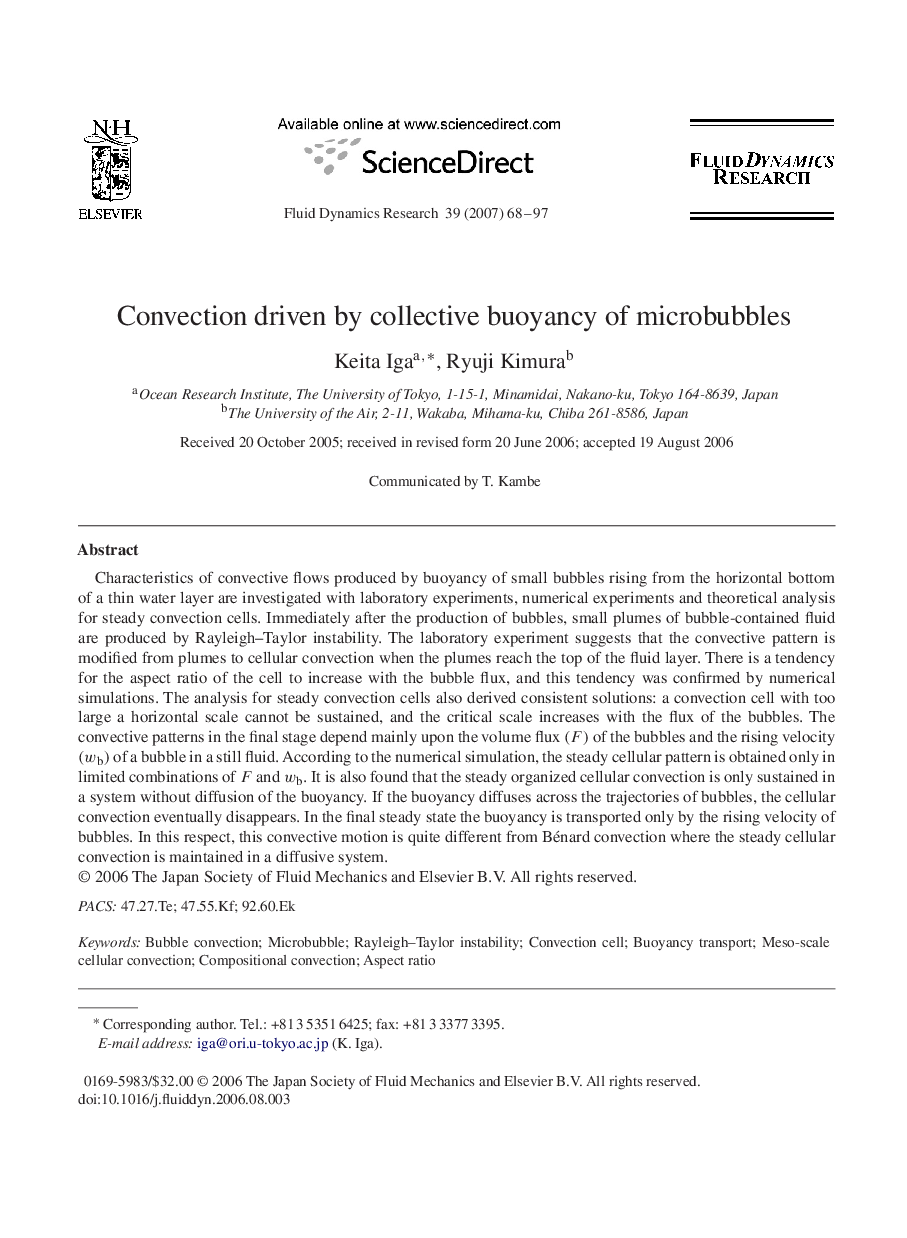| Article ID | Journal | Published Year | Pages | File Type |
|---|---|---|---|---|
| 774676 | Fluid Dynamics Research | 2007 | 30 Pages |
Abstract
Characteristics of convective flows produced by buoyancy of small bubbles rising from the horizontal bottom of a thin water layer are investigated with laboratory experiments, numerical experiments and theoretical analysis for steady convection cells. Immediately after the production of bubbles, small plumes of bubble-contained fluid are produced by Rayleigh-Taylor instability. The laboratory experiment suggests that the convective pattern is modified from plumes to cellular convection when the plumes reach the top of the fluid layer. There is a tendency for the aspect ratio of the cell to increase with the bubble flux, and this tendency was confirmed by numerical simulations. The analysis for steady convection cells also derived consistent solutions: a convection cell with too large a horizontal scale cannot be sustained, and the critical scale increases with the flux of the bubbles. The convective patterns in the final stage depend mainly upon the volume flux (F) of the bubbles and the rising velocity (wb) of a bubble in a still fluid. According to the numerical simulation, the steady cellular pattern is obtained only in limited combinations of F and wb. It is also found that the steady organized cellular convection is only sustained in a system without diffusion of the buoyancy. If the buoyancy diffuses across the trajectories of bubbles, the cellular convection eventually disappears. In the final steady state the buoyancy is transported only by the rising velocity of bubbles. In this respect, this convective motion is quite different from Bénard convection where the steady cellular convection is maintained in a diffusive system.
Keywords
Related Topics
Physical Sciences and Engineering
Engineering
Mechanical Engineering
Authors
Keita Iga, Ryuji Kimura,
